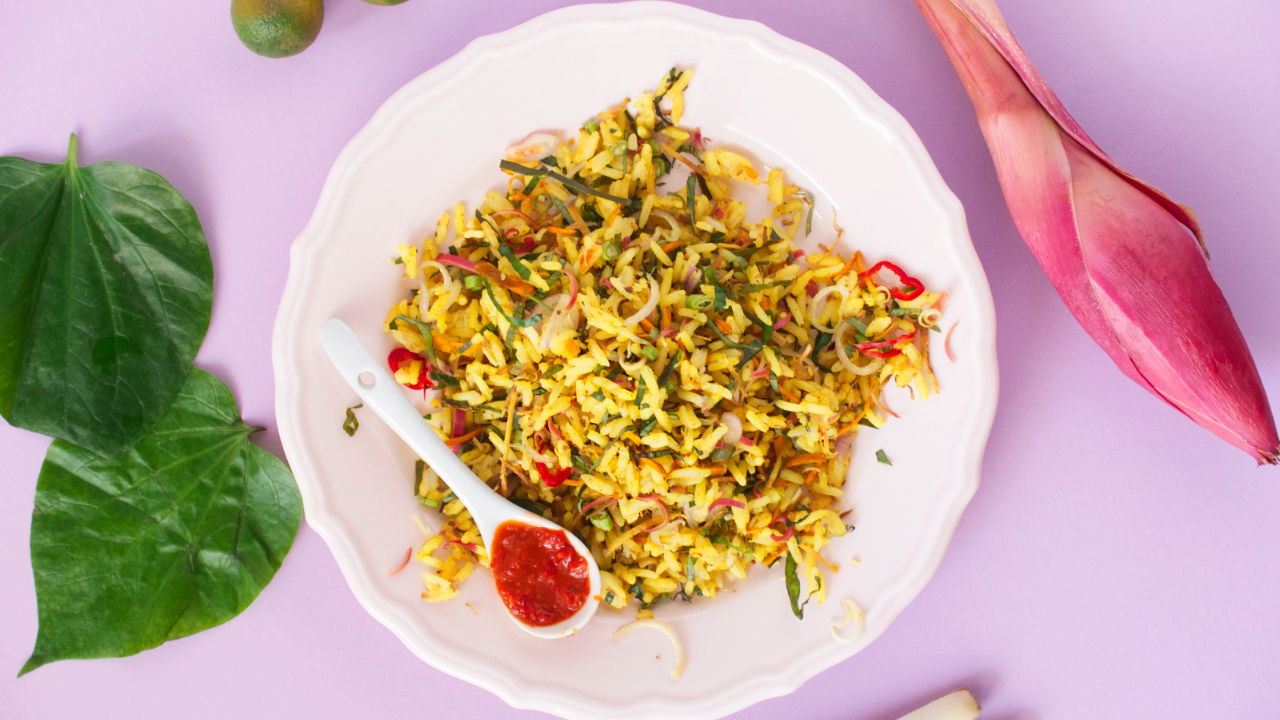The term "nasi ulam" literally translates to rice and salad. Having a variety of local vegetables and herbs as its main ingredients and tossed with rice, nasi ulam is exactly what its name suggests. However, unlike western salads, ulam is sometimes cooked using the grilling, boiling or steaming method and is often served with sambal belacan to enhance its taste. Turmeric, basil leaves and winged beans are some of the vegetables which are categorized as ulam.
There are many different types of nasi ulam in Indonesia, Malaysia and even southern Thailand with each showcasing its specialty. Nasi ulam Nyonya represents the combination of the Malay and Chinese cultures in one dish. Like the other varieties, this Nyonya rice salad is also served together with sambal belacan. The preparation can be quite tedious as each detail needs to be looked into to make it balanced and flavourful.
Basmati rice vs Jasmine rice
The best type of rice to use when preparing Nasi Ulam Nyonya is the long grain rice. Therefore, Jasmine rice is the more popular selection as it has a good amount of starch which allows the ingredients to bind with the grains. If you prefer rice with longer and thinner grains, Basmati rice would be the better choice although it is less moist and sticky.
Substitutes of fresh leafy herbs
The fresh leafy herbs used in this recipe are widely available in Southeast Asia. Each of them not only contributes a unique flavour but also makes the dish typically peranakan. Besides that, the locals believe in the great health benefits of these herbs. Most of these herbs, frozen or fresh, should be available at the local Asian grocers or markets. If you are unable to obtain some of them, feel free to substitute with other herbs such as coriander, sweet basil, penny wort or betel leaves. Ginger torch flower may be the toughest ingredient to find abroad. If unable to do so, try your luck at Japanese grocers and look for Myoga ginger.
Slice ingredients finely
While some ingredients may be tough and uncomfortable to chew, there are also others which deliver a very strong taste which many may find disturbing. For example, lemon grass is quite hard and tough, hence it needs to be chopped very finely to ensure it is easily ingested and to create a balanced taste in the dish.
Cook rice in advance
This peranakan rice salad is widely known for its distinctive flavours and deliciousness. Since it is served at room temperature, feel free to cook the rice and prep the ingredients a day before serving. It would be ideal for a party if you are rushed for time. In fact, Nasi Ulam Nyonya is a specialty to the Peranakan community during celebratory events such as birthday or weddings.
